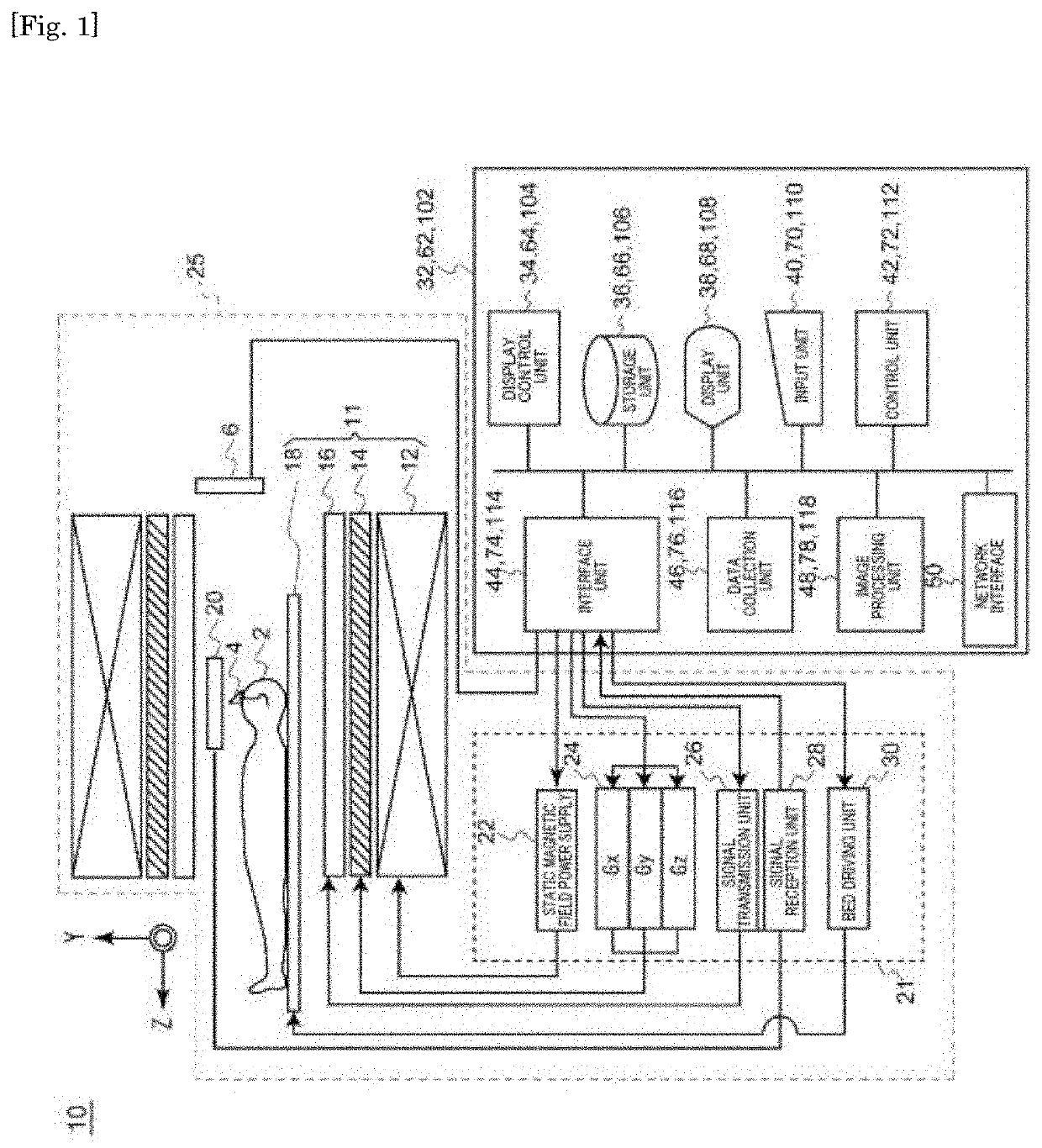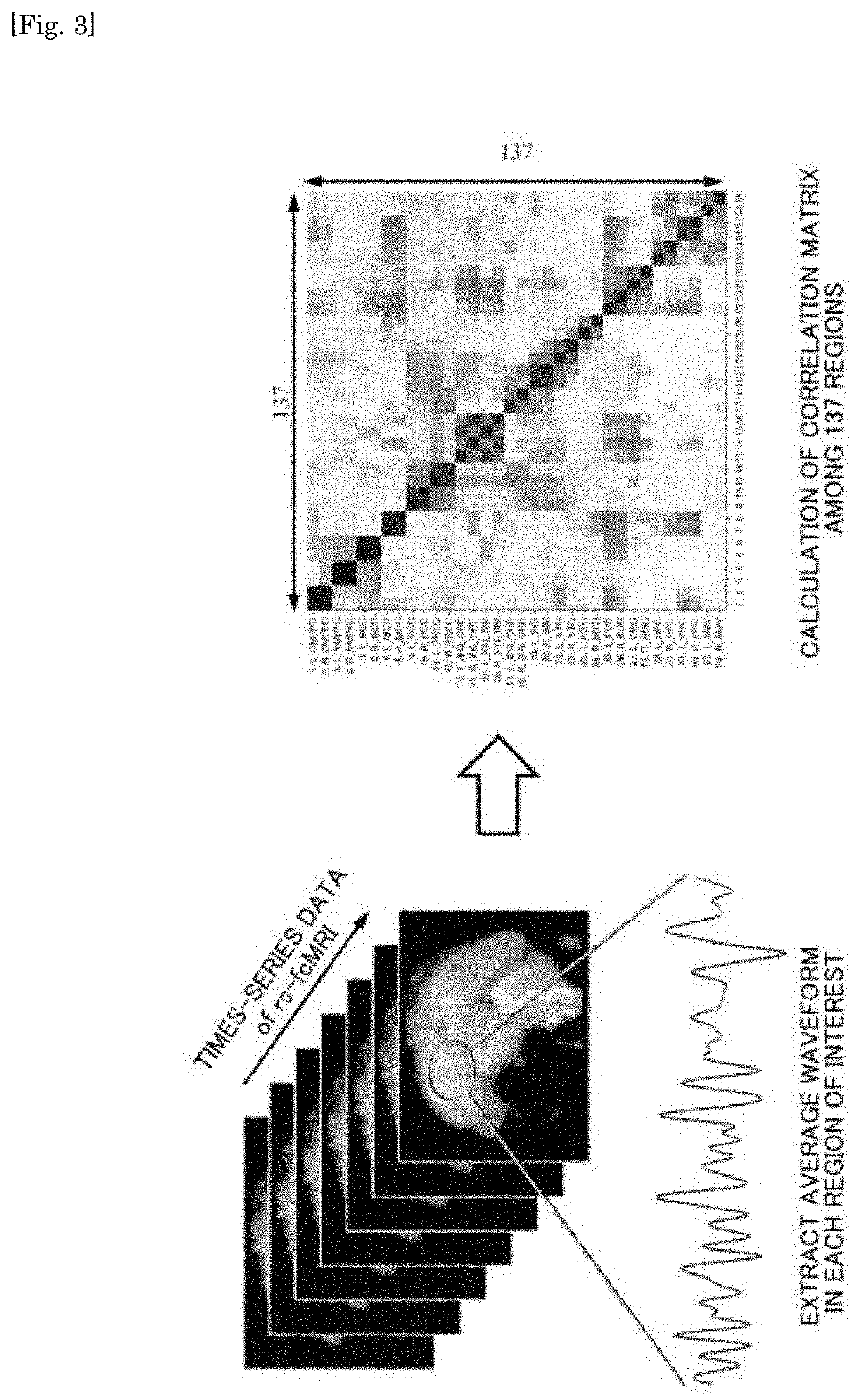Differentiation device, differentiation method for depression symptoms, determination method for level of depression symptoms, stratification method for depression patients, determination method for effects of treatment of depression symptoms, and brain activity training device
a brain activity training and differentiation method technology, applied in the field of differentiation devices, can solve the problems of not sufficiently considering a more detailed functional connectivity, difficult general development of such a biomarker, etc., and achieve the effect of discriminating the level of depressive symptoms
- Summary
- Abstract
- Description
- Claims
- Application Information
AI Technical Summary
Benefits of technology
Problems solved by technology
Method used
Image
Examples
example 1
II. Selection of 12 Pairs of Functional Connectivities for Classification of Melancholic MDD
[0559]In order to select 12 pairs of functional connectivities for classification of the melancholic MDD, rs-fMRI data of 66 melancholic MDD patients and 66 healthy individuals shown in Table 1a was used. The functional connectivity for classifying the melancholic MDD group was selected based on the procedure described in the embodiment in accordance with the method of creating the classifier for classifying autism (ASD) reported by the above-mentioned literature by Yahata et al.
[0560]This system uses the sparse canonical correlation analysis (L1-SCCA) subjected to L1 regularization and the sparse logistic regression (SLR). The SLR is not useful for classifying MDD, but has a capability of training the logistic regression model while at the same time trimming each functional connectivity in an objective manner. A certain amount of input was reduced by L1-SCCA before training by the SLR, and ...
example 2
III. Application of Classifier in the Present Invention to Non-Melancholic MDD Group and Whole MDD Group
[0573]FIG. 27c shows data obtained by creating the classifier in the present invention with each of the whole MDD group, the melancholic MDD group, and the non-melancholic MDD group serving as training data (vertical direction), and considering accuracy with each group serving as test data (horizontal direction). As a result of the LOOCV, for example, the classifier generated by the melancholic MDD group has the accuracy of 54% (sensitivity: 42%, specificity: 67%, and AUC: 0.65) for the non-melancholic MDD. The accuracy of the LOOCV for the whole MDD group is 66% (sensitivity: 58%, specificity: 74%, and AUC: 0.74).
[0574]The results indicate the fact that the classifier having the whole MDD group as training data has a lower classification accuracy compared to the classifier having the melancholic MDD group as training data or the classifier having the melancholic MDD group as tra...
example 5
12 Pairs of Functional Connectivities Through Treatment
[0579]Next, contribution to ΔWLS was considered for each functional connectivity in order to consider an influence of SSRI (escitalopram) on each of the 12 pairs of functional connectivities.
[0580]Specifically, in preliminary and subsequent analysis of administration, the following numerical expression was used to calculate a contribution score of each functional connectivity.
[Math.13]ci=wi(∑j=1NFCi,jpostN-∑j=1NFCi,jpreN)
[0581](In the expression given above, N represents the number of patients who have received the treatment, and wi represents the weight of the classifier.)
[0582]Further, in order to obtain a reference score, a similar contribution score between the MDD and the healthy control group was also calculated by the following numerical expression, to thereby calculate the contribution score.
[Math.14]si=wi(∑j=1NFCi,jHCN-∑k=1MFCi,kMDDM)
[0583](In the expression given above, M represents the number of MDDs, and N represents...
PUM
 Login to View More
Login to View More Abstract
Description
Claims
Application Information
 Login to View More
Login to View More - R&D
- Intellectual Property
- Life Sciences
- Materials
- Tech Scout
- Unparalleled Data Quality
- Higher Quality Content
- 60% Fewer Hallucinations
Browse by: Latest US Patents, China's latest patents, Technical Efficacy Thesaurus, Application Domain, Technology Topic, Popular Technical Reports.
© 2025 PatSnap. All rights reserved.Legal|Privacy policy|Modern Slavery Act Transparency Statement|Sitemap|About US| Contact US: help@patsnap.com



